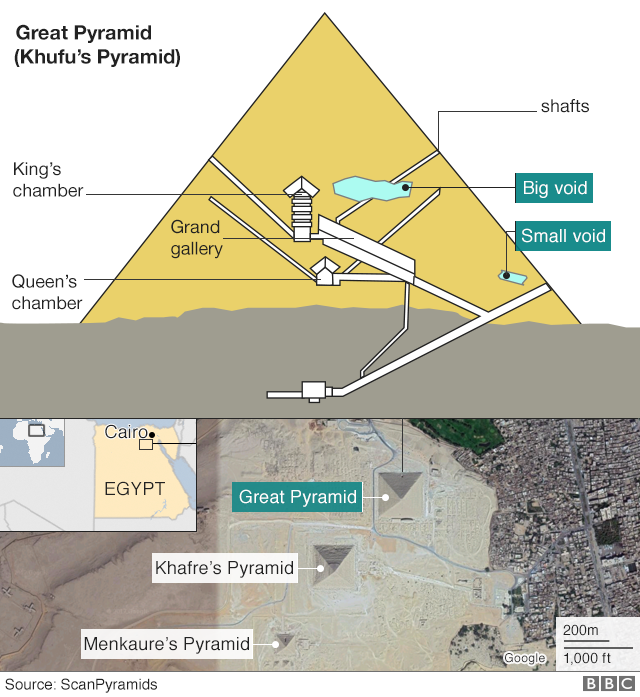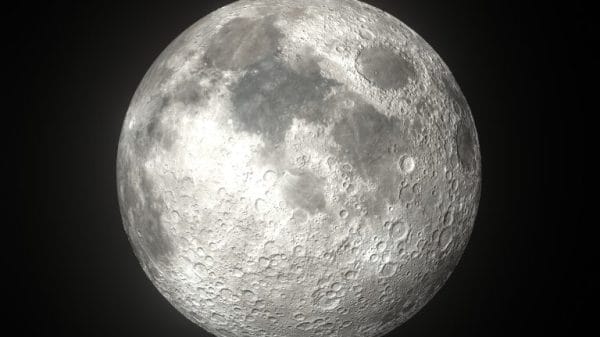“Just because is mystery is 4500 years old doesn’t mean it can’t be solved …” The Egyptian Ministry of Antiquities believes this. So do the Faculty of Engineering at Cairo University and France’s HIP (Heritage, Innovation, Preservation) Institute. These three organizations teamed up on October 25, 2015 to form ScanPyramids, an initiative for mapping the insides of Egypt’s pyramids without even touching them. One day, one week, and two years later, it paid off. Using advanced technology and the power of the sun, they located a mysterious void within the Great Pyramid of Giza.
What is the Void?
Here’s what we know: the “void,” also known as SP-BV, is an empty space above the pyramid’s Grand Gallery. ScanPyramids estimates that it is a minimum of 30 meters long and between 50 and 70 meters from the ground. For reference, the Grand Gallery is 47 meters long and the pyramid is 139 meters high. We never knew about it before because it is not connected to any of the known corridors and compartments.
… And that’s all we really know at the moment. Experts are already speculating about its purpose. Some believe the empty space functions to keep the weight of the pyramid’s top from collapsing the chambers’ ceilings. Archaeologists have observed this in the construction of other pyramids. Monica Hanna, founder of Egypt’s Heritage Task Force, said it could be “another chamber or a gallery, an aerial shaft, or an architectural fault that was sealed off.”
For her part, ScanPyramids director Mehdi Tayoubi won’t speculate. She told The New York Times, “We have chosen [to use] the word ‘void’ and nothing else because we don’t know what this void is.”

A handy-dandy diagram. (Source: BBC, ScanPyramids)
How Did They Find It Without Going Inside the Pyramid?
In the 19th and early 20th centuries, Egyptologists blew open pyramids with gunpowder. ScanPyramids, wishing to preserve these ancient wonders, utilizes nonintrusive methods for mapping them. Their primary tool is muon particles, a byproduct of sun-born radiation piercing Earth’s atmosphere. Particle physicists have learned that muons can phase through both air and solids. However, they lose energy and decay quicker if they pass through denser objects – like stone.
ScanPyramids realized they could apply this knowledge to their work and utilized muography to look for empty spaces in pyramids. They used three different technologies for detecting the particles. First, they captured surviving muons with nuclear emulsion films provided by Japan’s Nagoya University. Then they used hodoscopes from KEK, a Japanese research group. Lastly, the French Alternative Energies and Atomic Energy Commission (CEA) installed argon-based detectors.
Interestingly, they didn’t discover the void so recently. They first announced the possibility of vacant cavities within the Great Pyramid in October 2016. Egyptologists and archaeologists supervising the team called their conclusion hasty. What makes their new findings noteworthy is that these three distinct methods confirm the same thing. All signs point to the presence of a void above the Grand Gallery.
We know this talk of Ancient Egypt is making you think about Assassin’s Creed: Origins. Here’s an article from before its release.
Featured Image Via













